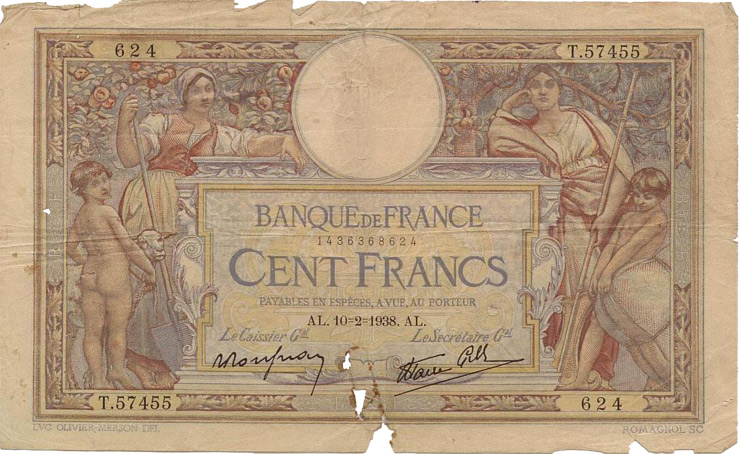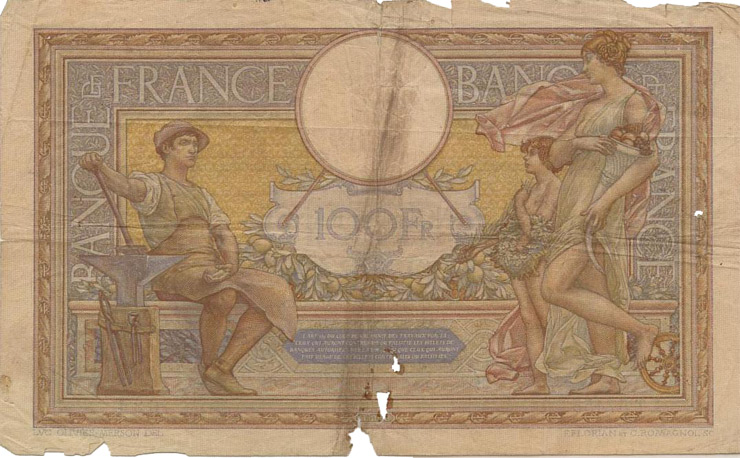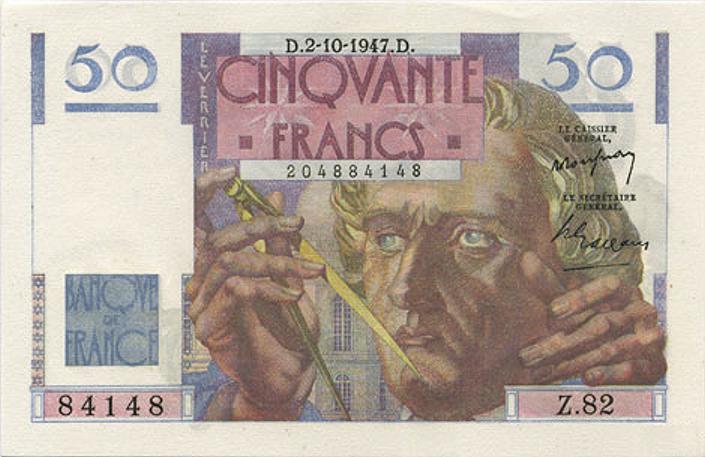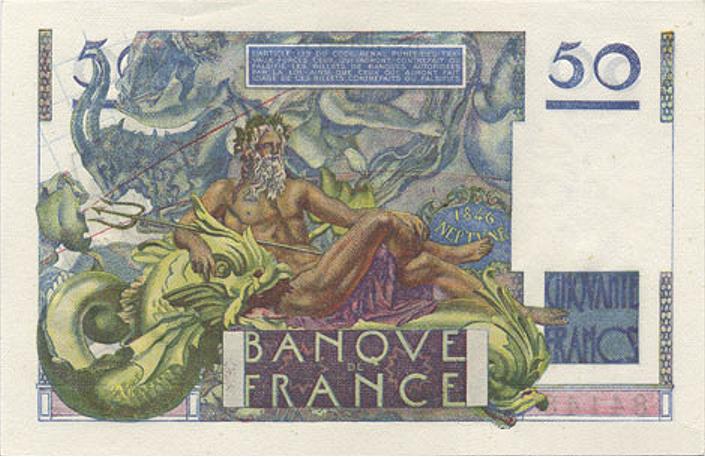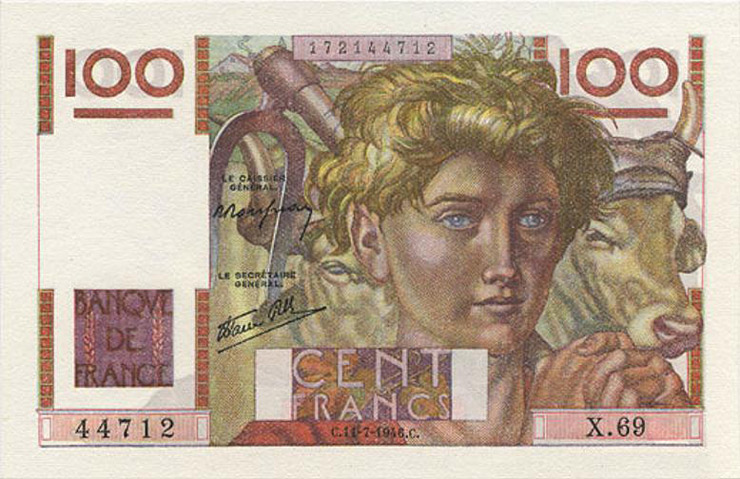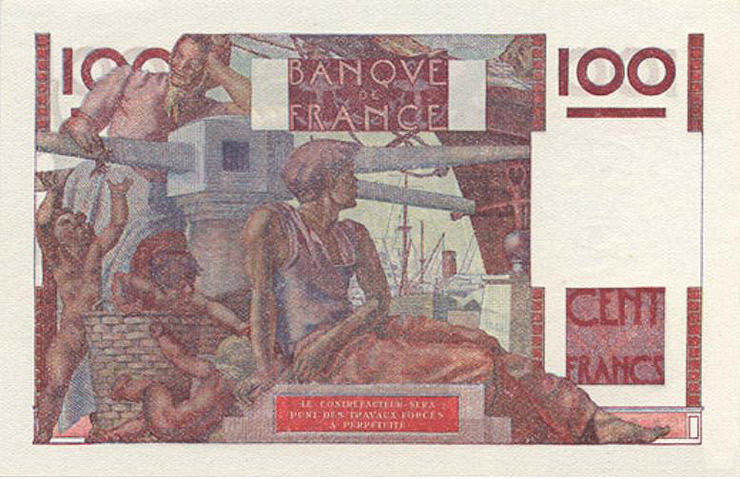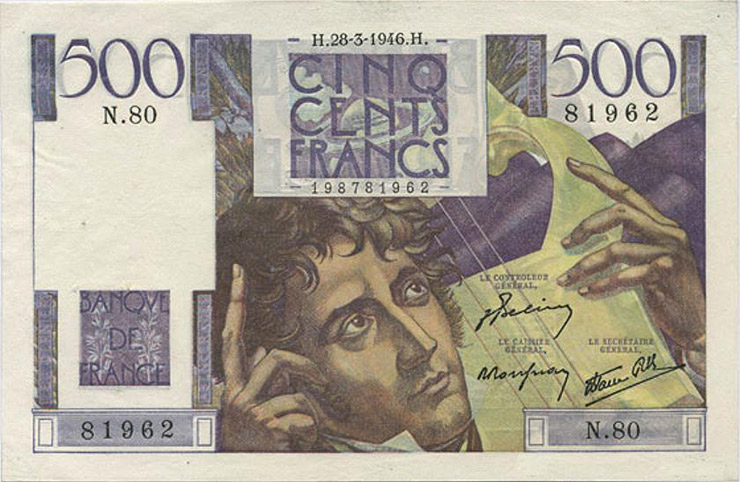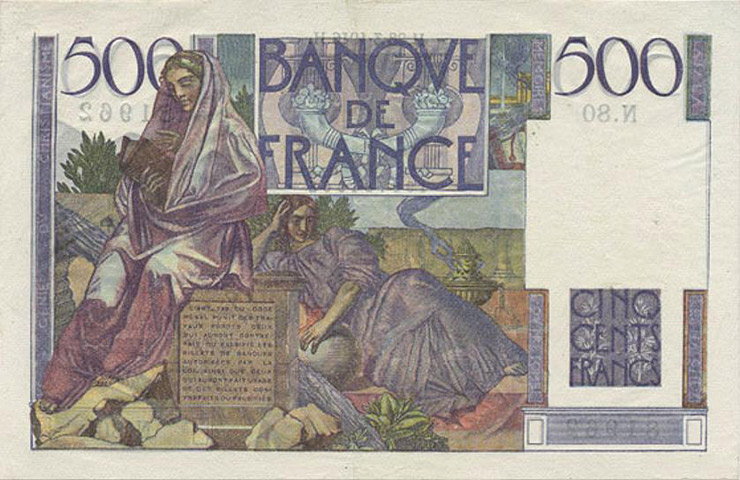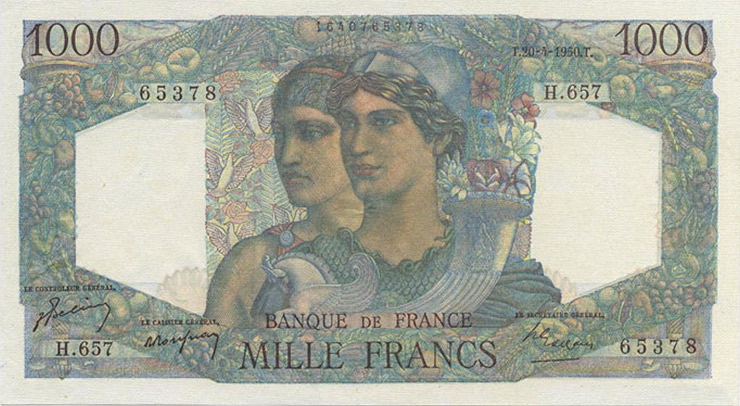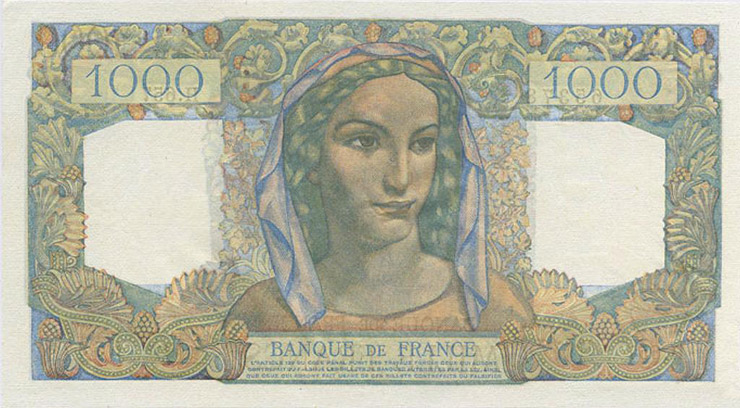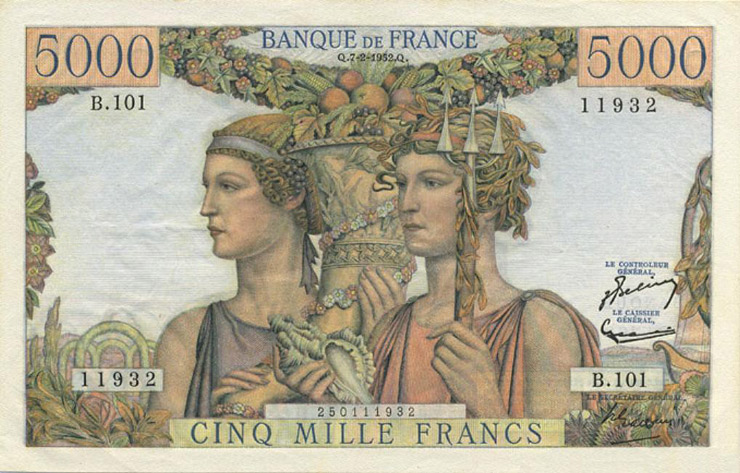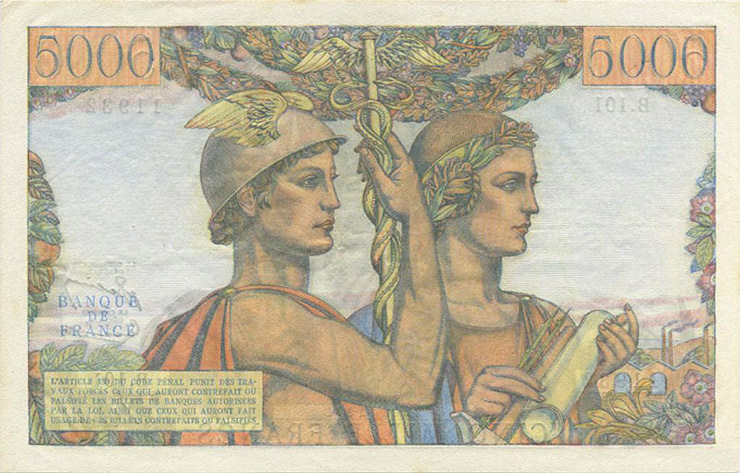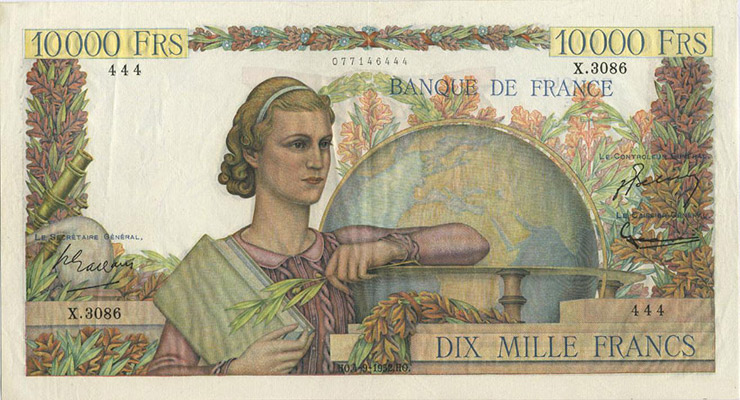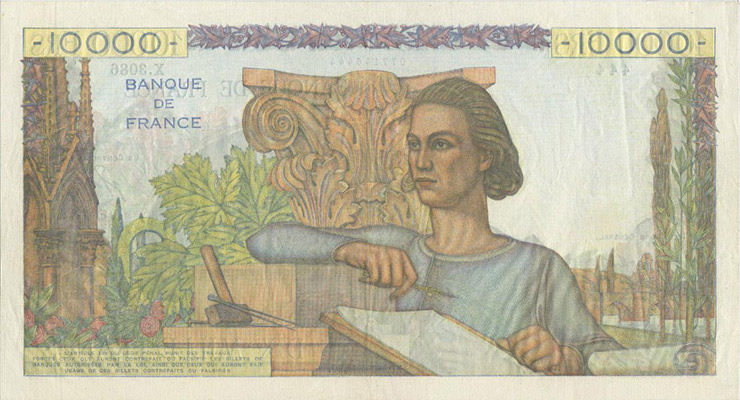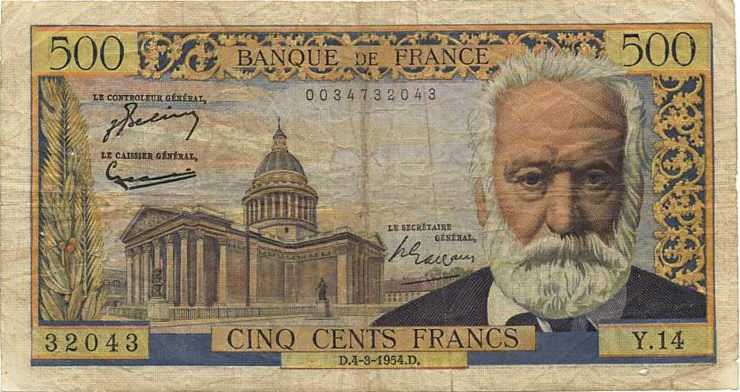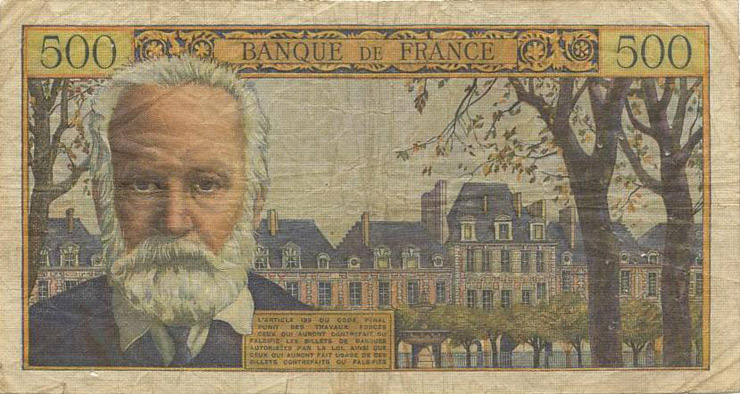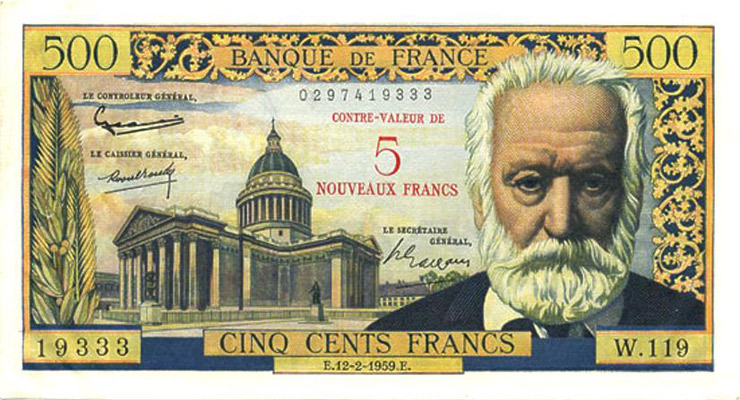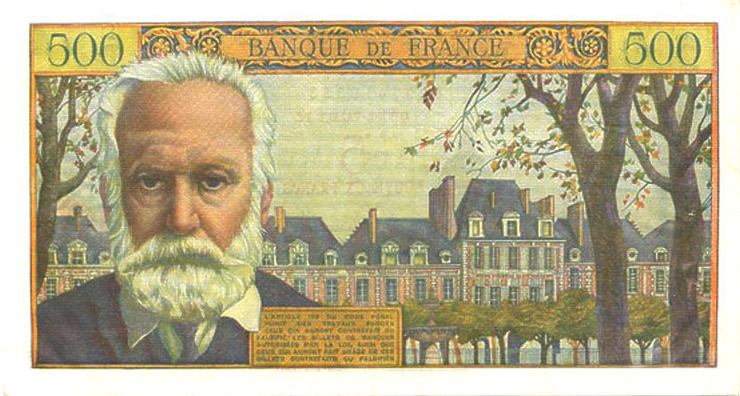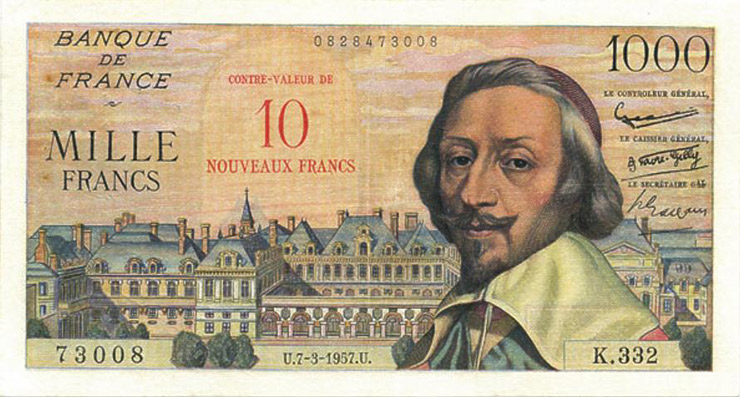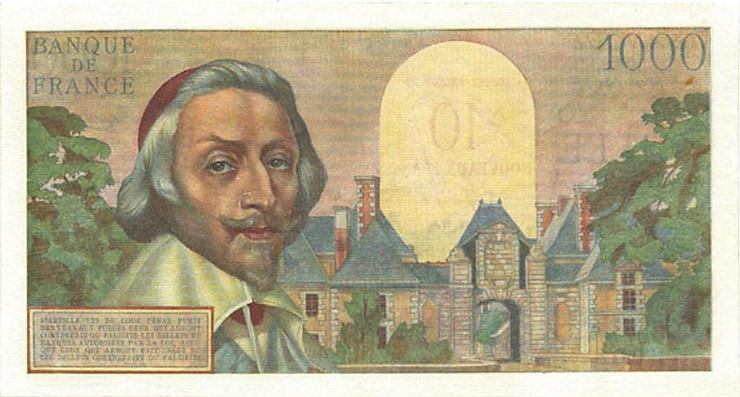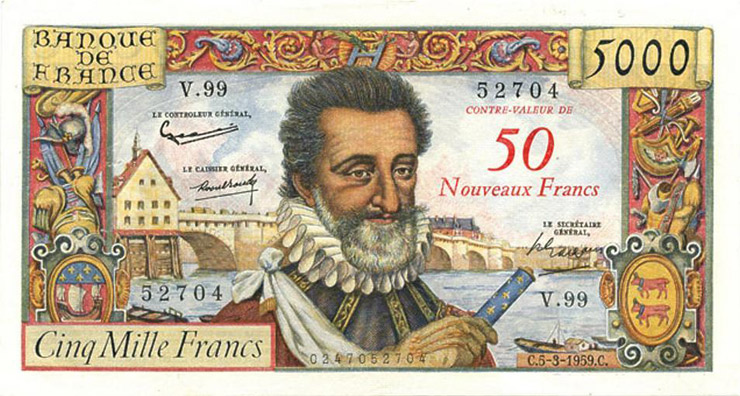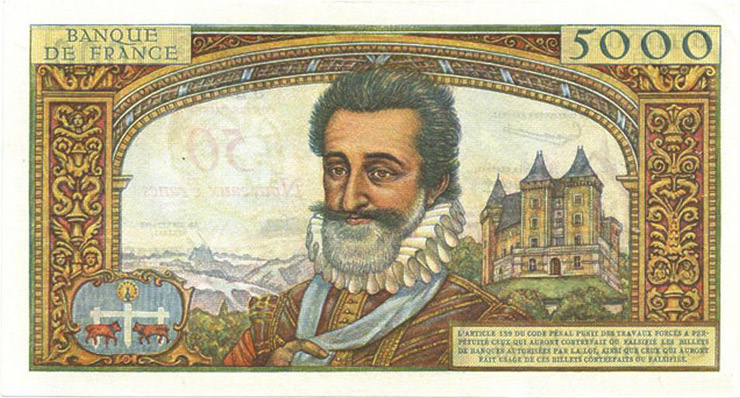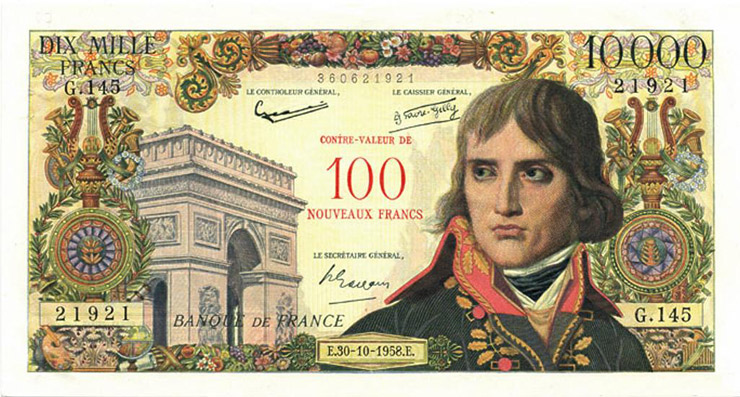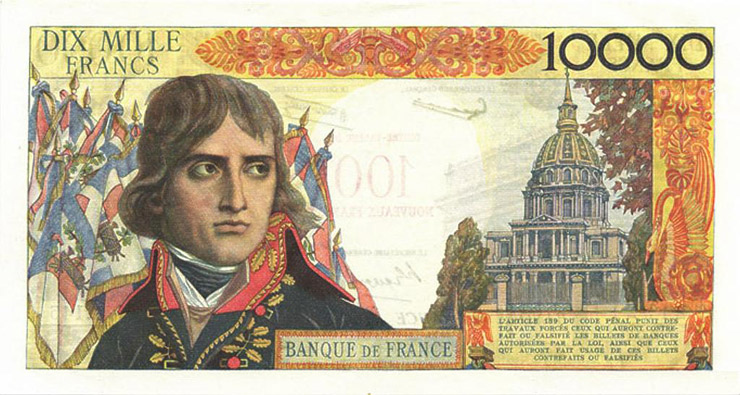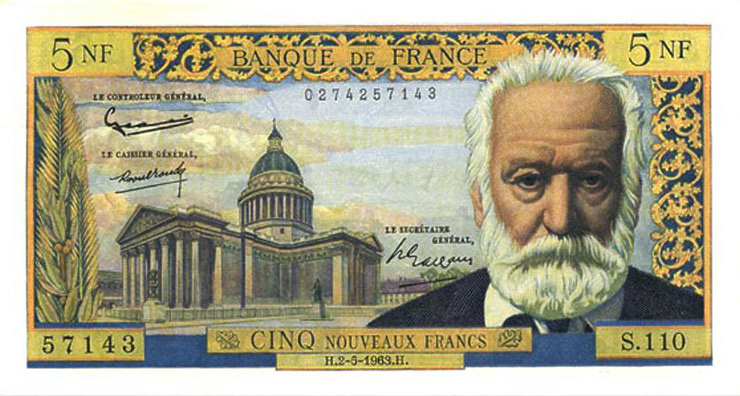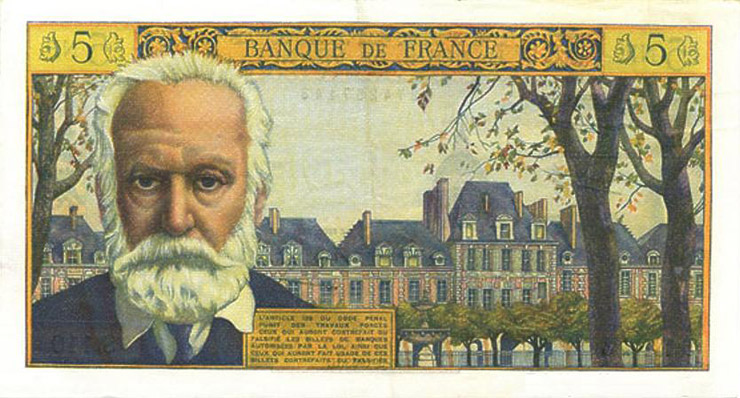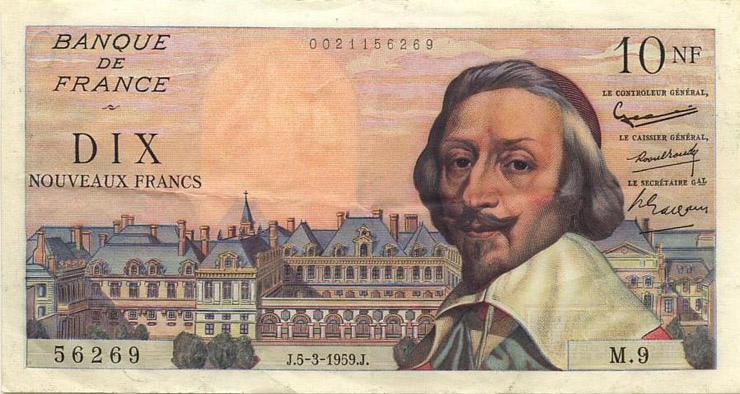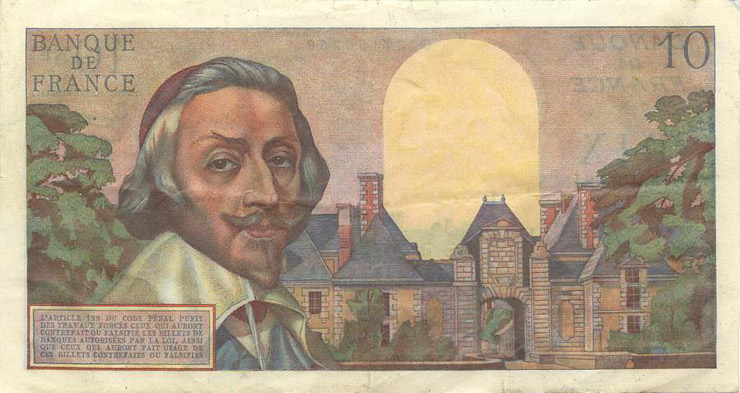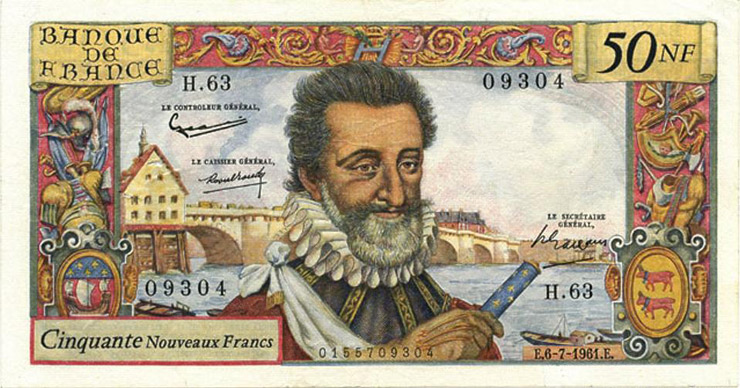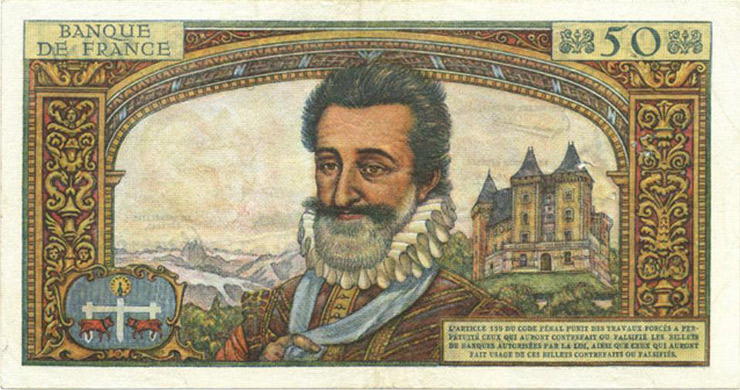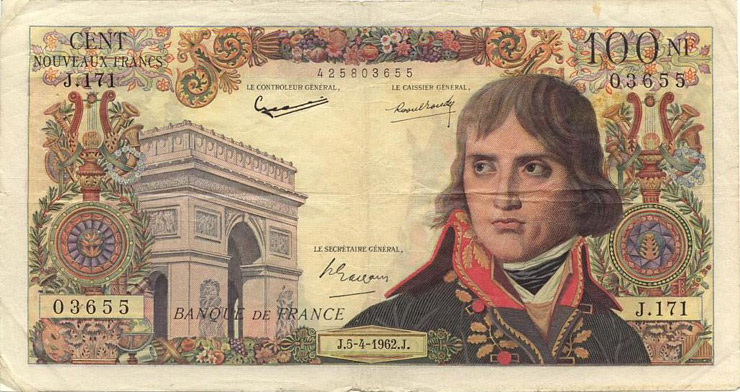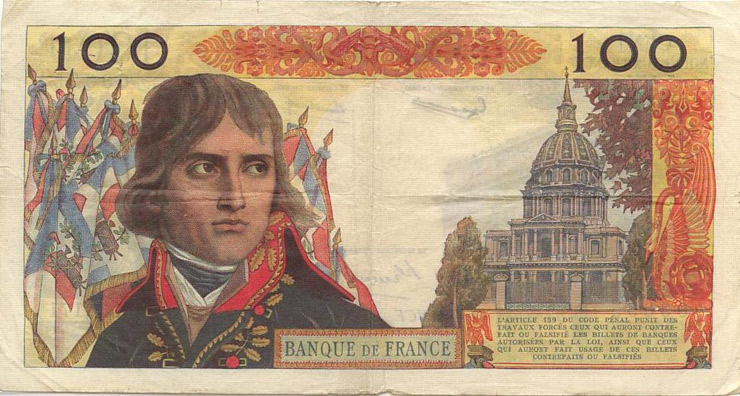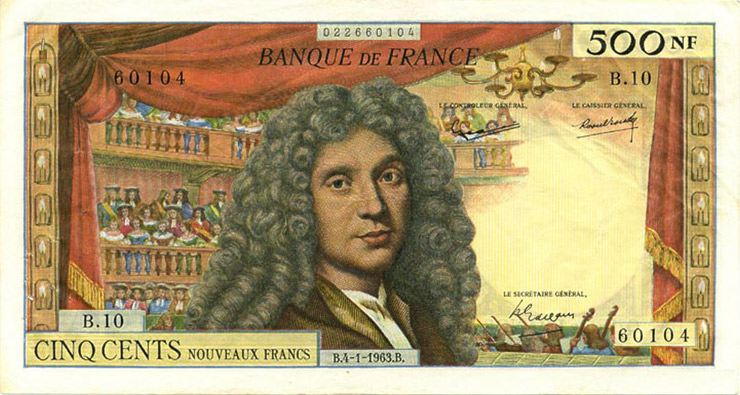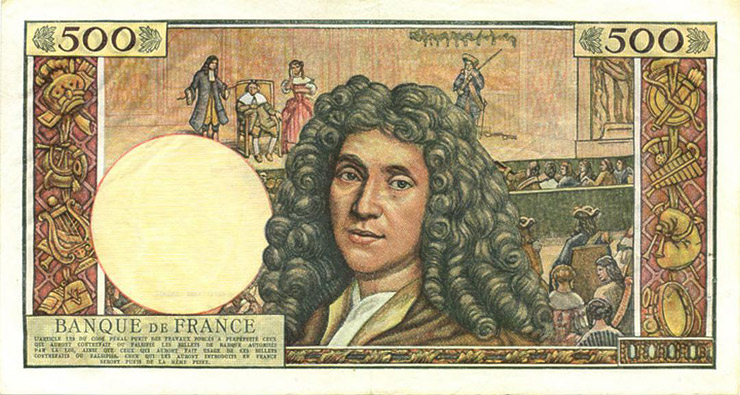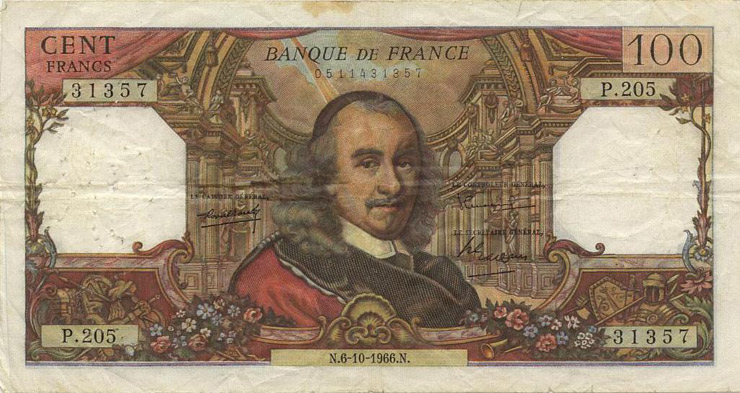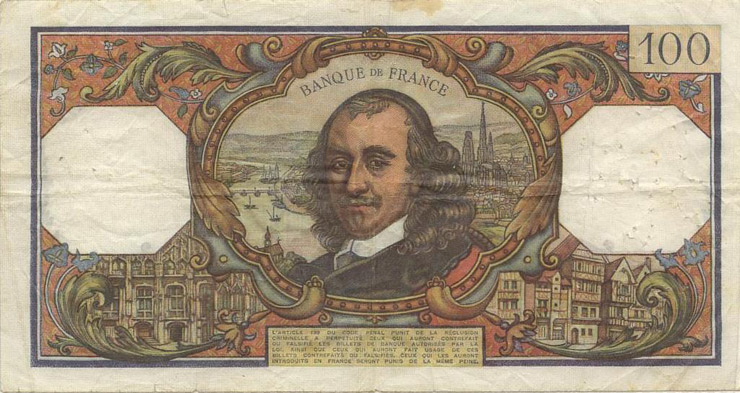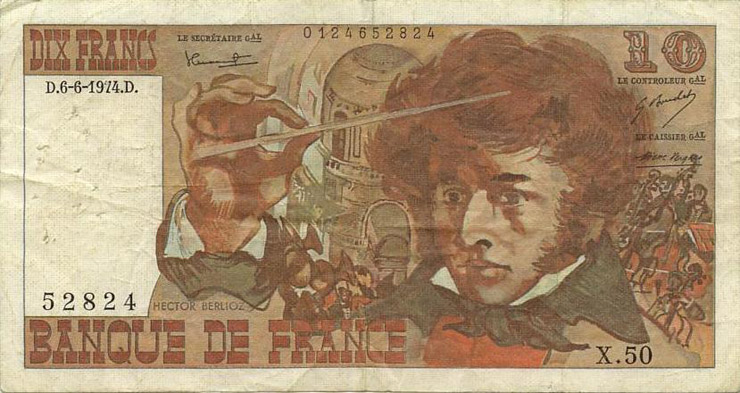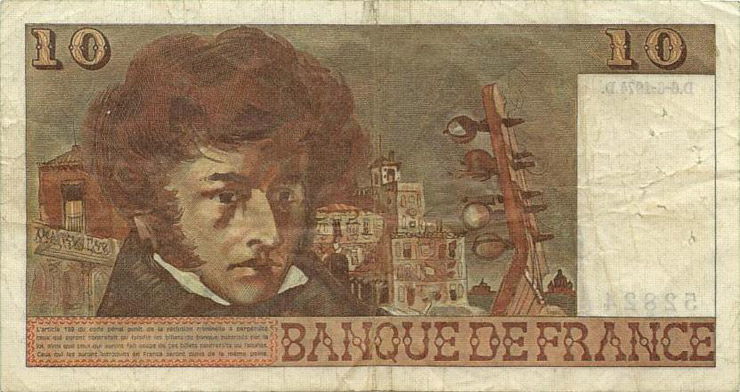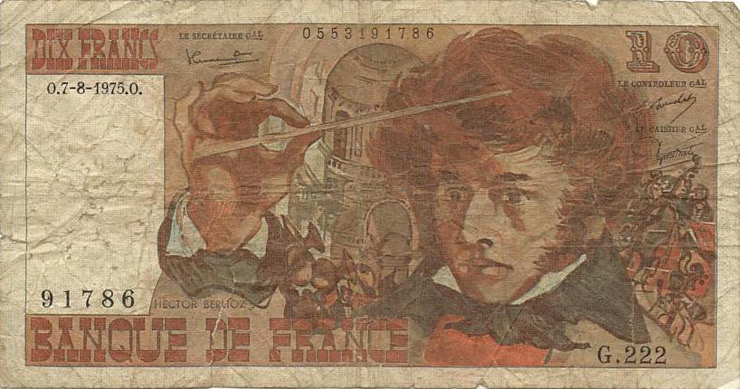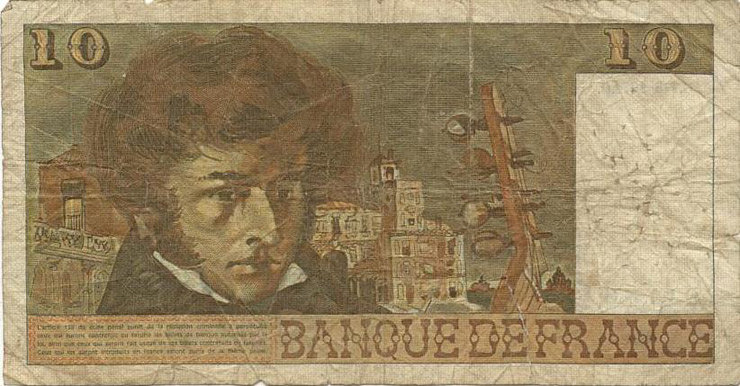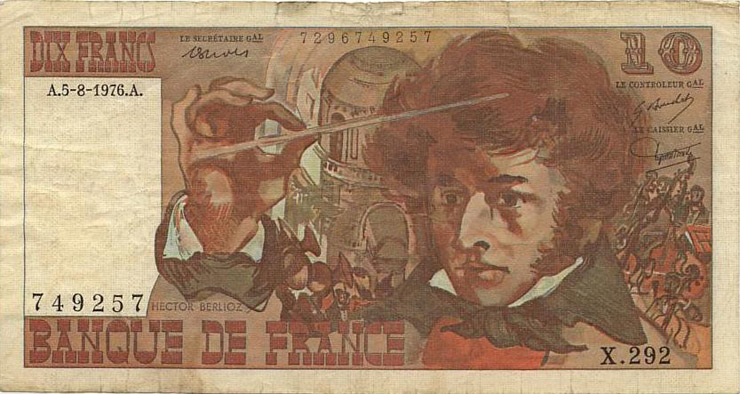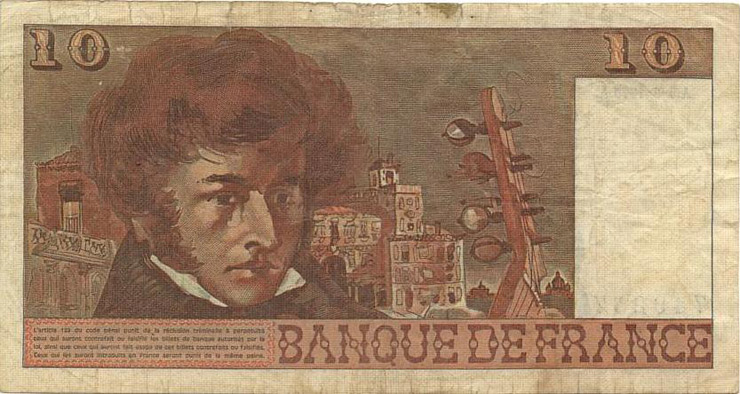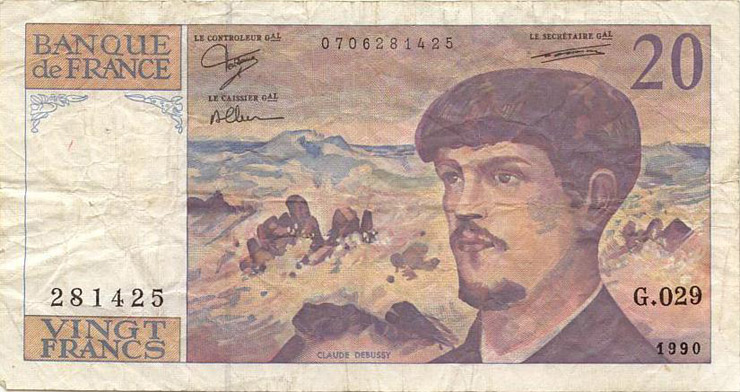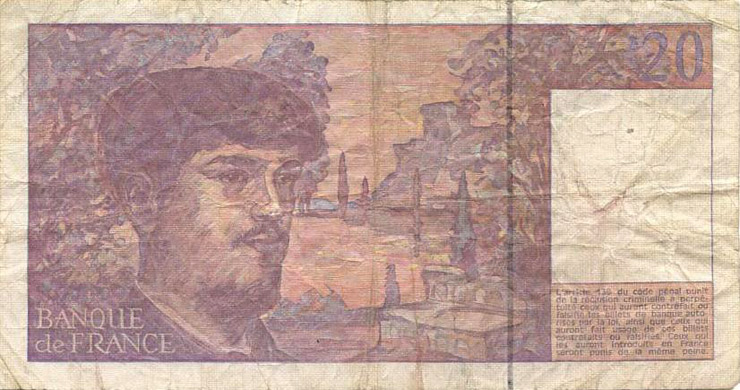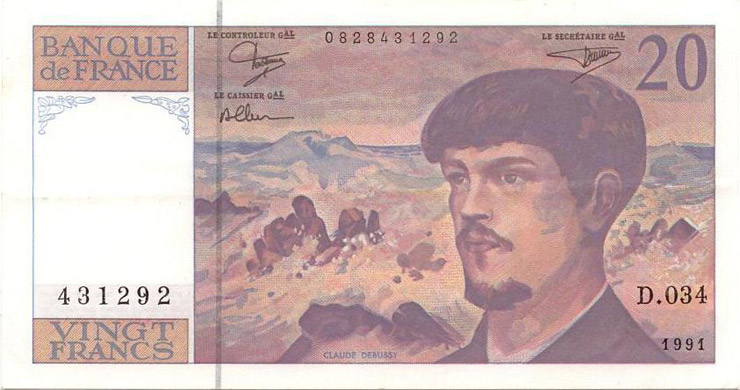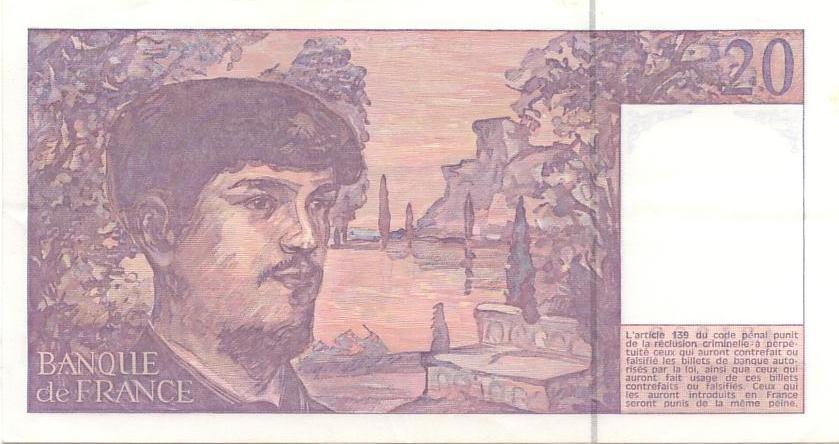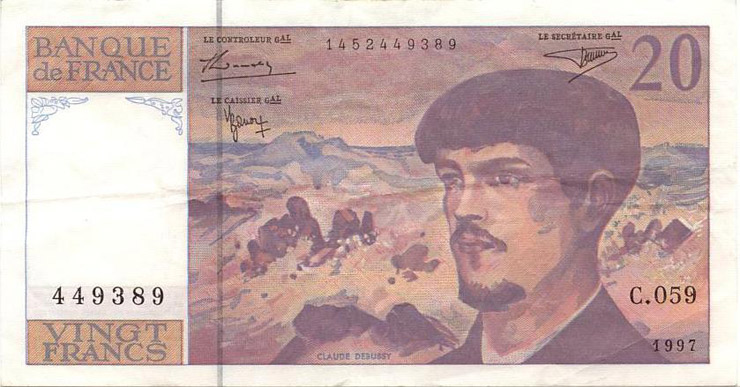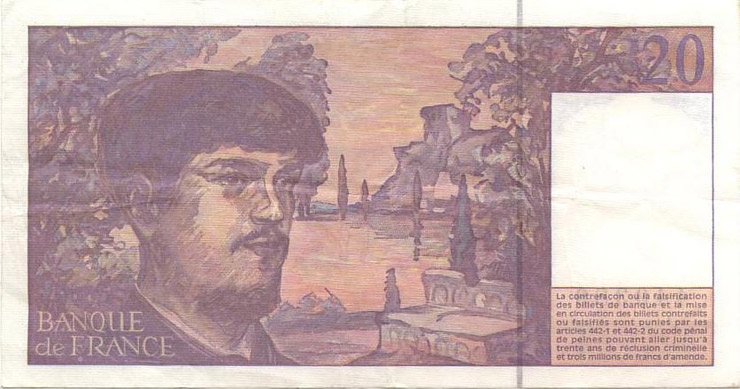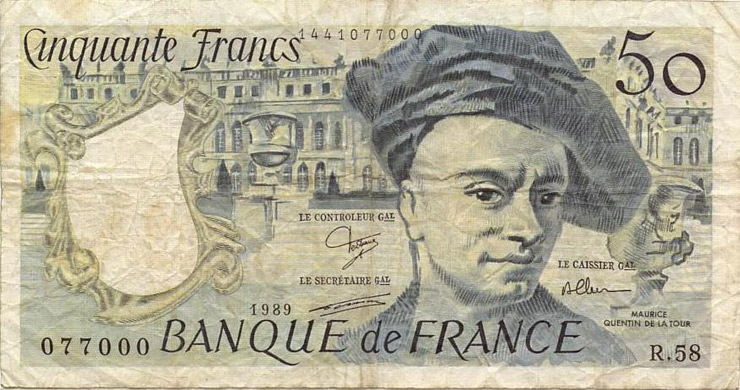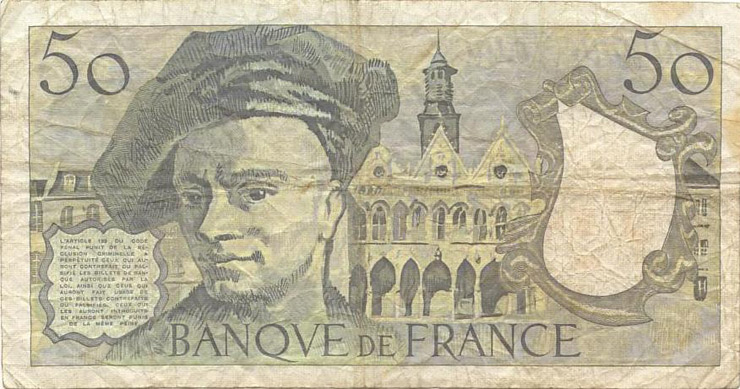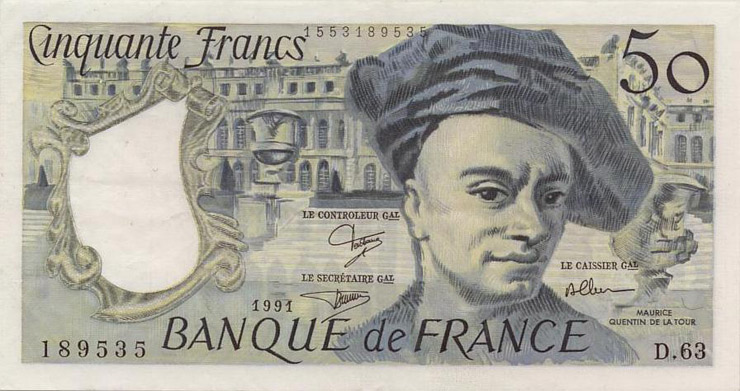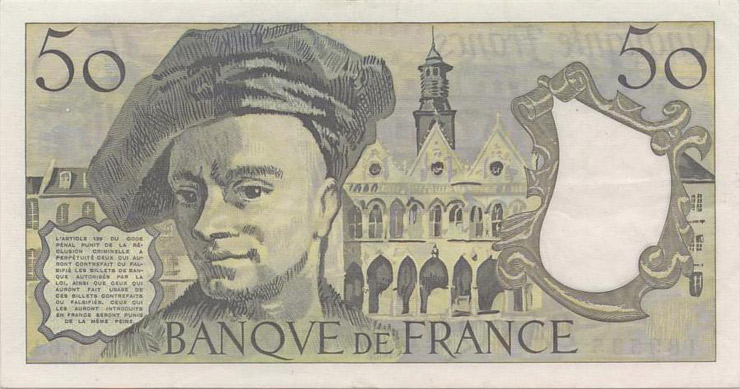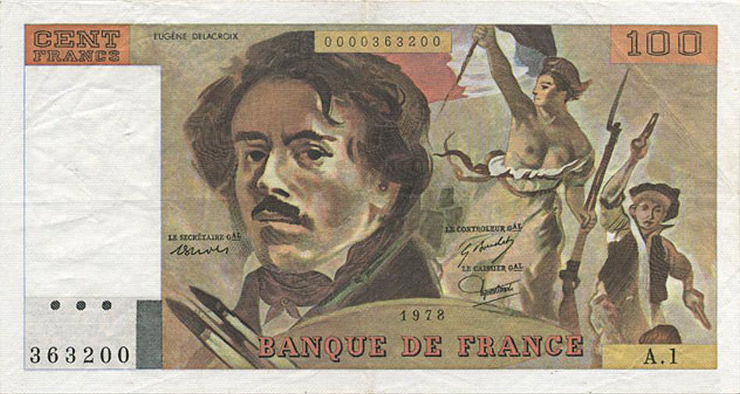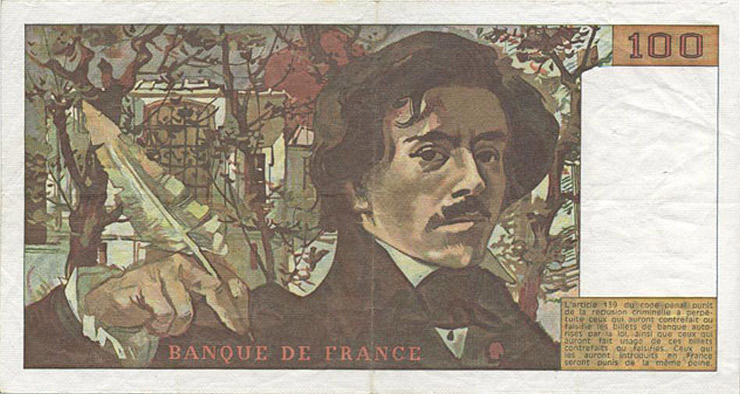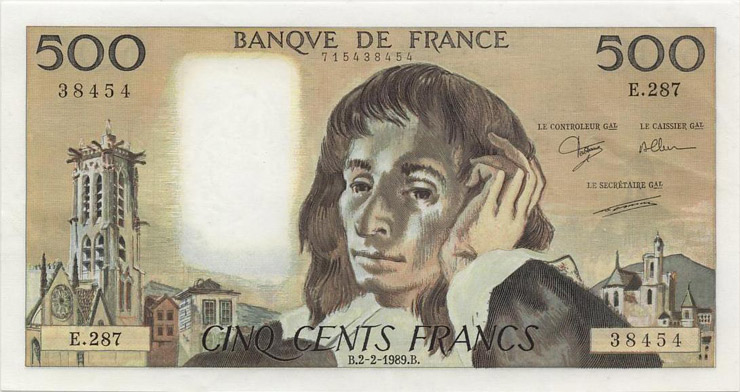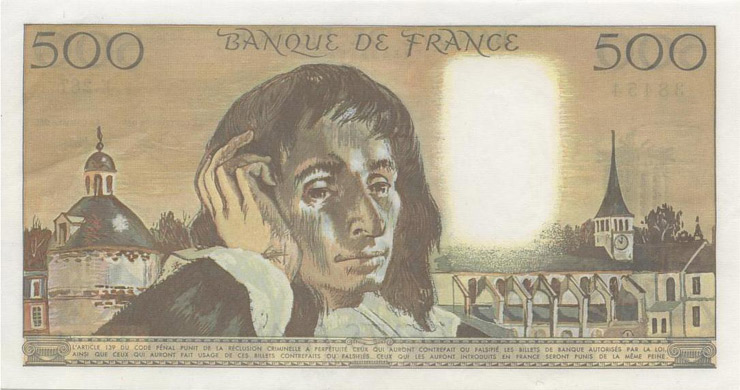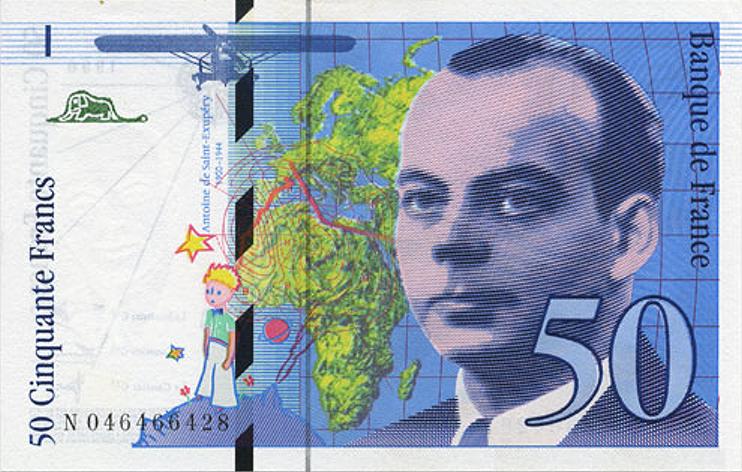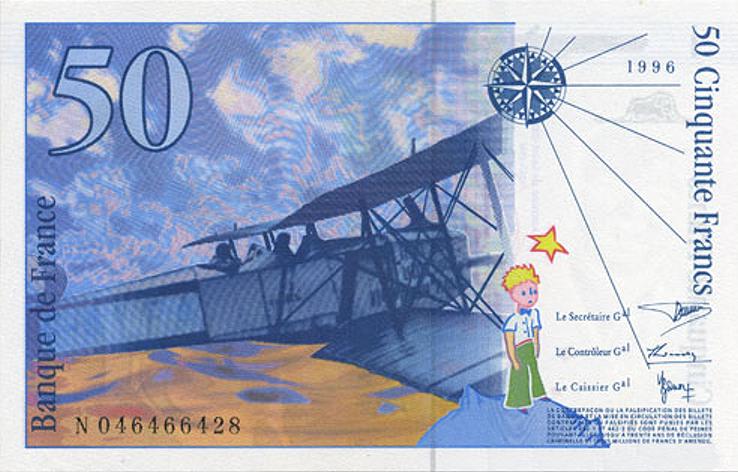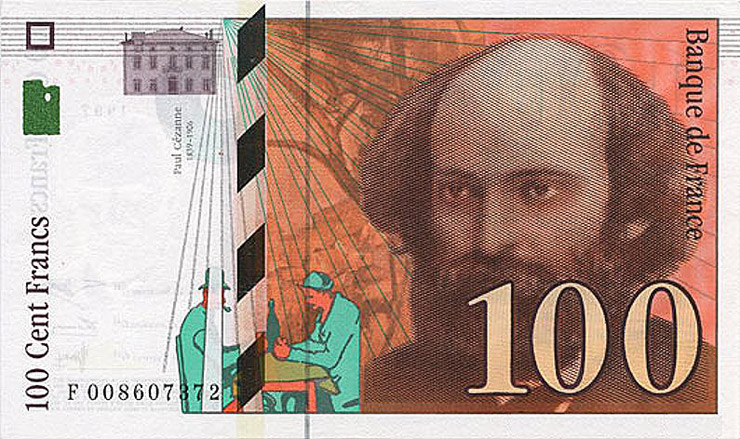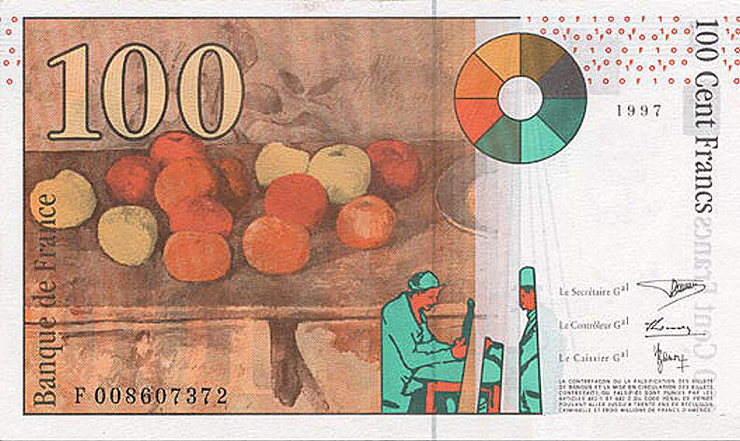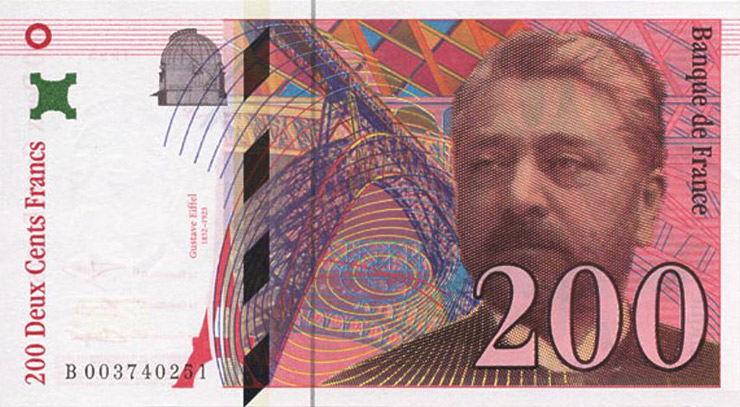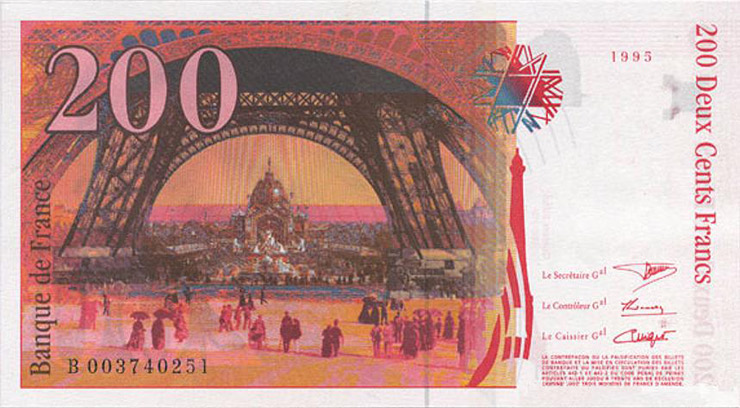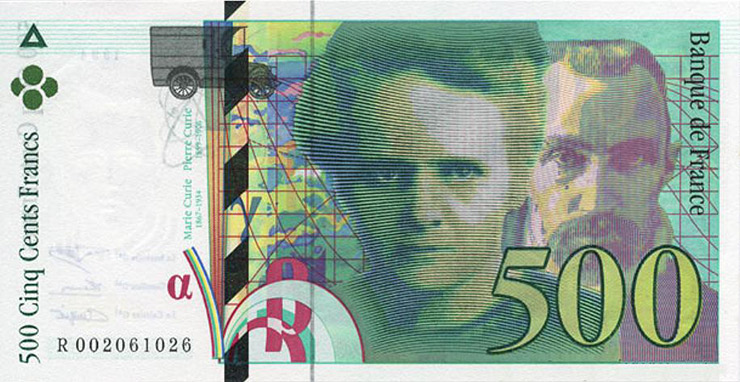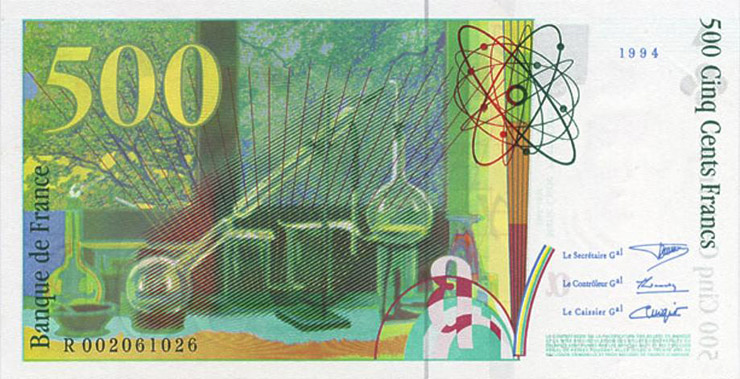France Banknotes
 |
The History of the French franc |
|
One of Europe's oldest currencies, the french franc was first minted in 1360 to pay a King's ransom for the release of King John the Good. It reappeared in a variety of manifestations over the course of French history, often in times of trouble. The currencies name comes from the inscription reading Johannes Dei Gratia Francorum Rex ("Jean by the grace of God King of the French") and its value was set as one livre tournois (a money of account). Francs were later minted under Charles V, Henri III and Henri IV. Louis XIII of France stopped minting the franc in 1641 (replacing it with the Écu and Louis d'Or), but use of the name "franc" continued in accounting as a synonym for the livre tournois. During the French Revolution the franc was established as the national currency by the French Revolutionary Convention in 1795 as a decimal unit (1 franc = 100 centimes). The value of the franc was set at 4.5 grams of fine silver. This was slightly less than the livre tournois which was valued at 4.505 grams of silver, but in 1796 the franc's value was set at 1.0125 livres or (1 livre, 3 deniers), reflecting in part the past minting of sub-standard coins. In 1803, the "franc germinal" (named after the name of the month in the revolutionary calendar) was established, creating a gold franc containing 9/31 g (290.32 mg) of fine gold. From this point, gold and silver-based units circulated interchangeably on the basis of a 1:15.5 ratio between the values of the two metals (bimetallism). This system continued until 1864, when all silver coins except the 5 franc piece were debased from 90% to 83.5% silver without the weights changing. 1865 saw the formation of the Latin Monetary Union of which France was a founding member. The Latin Monetary Union was an attempt to unify several currencies into a single currency that could be used in all member countries. The Union was formed at a time when most currencies were still made out of gold and silver. The Union was originaly made up of four countries: France, Switzerland, Belgium and Italy. The common currency was based on the French franc germinal, with the name franc already being used in Switzerland and Belgium, whilst other countries continued to use their own names for the currency. Thus 5 Italian lire was equal to 5 french francs. The Union was later joined by Spain and Greece in 1868, and Romania, Austria, Bulgaria, Venezuela, Serbia, Montenegro, San Marino and the Papal States in 1889. In 1873, the Monetary Union went over to a purely gold standard of 1 franc equal 9/31 grams of gold. With outbreak of World War I caused France to leave the gold standard of the Latin Monetary Union. The war severely undermined the franc's strength, as war expenditure, inflation and postwar reconstruction, financed partly through the printing of ever more money, reduced the franc's purchasing power by 70% from 1915 to 1920 and a further 43% from 1922 to 1926. France returned to the gold standard from 1928 - 1936, France left the gold standard in 1936 and the value of the French franc continued to slide. During the German occupation of France, the franc was a satellite currency of the German Reichsmark. The coins were changed, with the words "travail, famille, patrie" (work, family, fatherland) replacing the Republican triad "Liberté, Égalité, Fraternité" (Freedom, Equality, Brotherhood) and the symbol of the Vichy regime added. After the close of World War II the value of the French franc continued to slide further, until in 1959 the value of the French franc was less then 1/40 of its 1935 value. The New FrancIn January 1960 the French franc was revalued at 100 existing francs. Old franc pieces continued to circulate as centimes (none of which were minted for the first two years), 100 of them making a nouveau franc (the abbreviation NF was used on banknotes for some time). Inflation continued to erode the currency's value but at a greatly reduced rate comparable to other countries so when the value of the franc was pegged to that of the euro in January 1, 1999, the new franc was worth less than an eighth of its original value. Interestingly, after revaluation and the introduction of the new franc, many French people continued using old francs (anciens francs), to describe large sums. For example, lottery prizes were often advertised in amounts of centimes, equivalent to the old franc. This usage continued right up to when franc notes and coins were withdrawn in 2002. From January 1, 1999, the value exchange rate of the French franc against the euro was set at a fixed parity of 1 EUR=6.55957 FRF. Euro coins and notes replaced it entirely between January 1 and February 17, 2002. Prior to the introduction of the euro banknotes and coins, French banknotes circulated in denominations of 20, 50, 100, 200 and 500 francs. Coins were issued in denominations of 5, 10, 20 and 50 centimes, 1, 2, 5, 10 and 20 francs. The ISO 4217 code for the currency was FRF.  |
Date |
Value |
Face View |
Back View |
1938 |
100 Francs |
||
1947 |
50 Francs |
||
1946 |
100 Francs |
||
1946 |
500 Francs |
||
1950 |
1000 Francs |
||
1952 |
5000 Francs |
||
1952 |
10000 Francs |
||
1954 |
500 Francs |
||
1959 |
5 Nouveaux Francs |
||
1957 |
10 Nouveaux Francs |
||
1959 |
50 Nouveaux Francs |
||
1958 |
100 Nouveaux Francs |
||
1961 |
5 Nouveaux Francs |
||
1959 |
10 Nouveaux Francs |
||
1961 |
50 Nouveaux Francs |
||
1962 |
100 Nouveaux Francs |
||
1963 |
500 Nouveaux Francs |
||
1966 |
100 Francs |
||
1974 |
10 Francs |
||
1975 |
10 Francs |
||
1976 |
10 Francs |
||
1990 |
20 Francs |
||
1991 |
20 Francs |
||
1997 |
20 Francs |
||
1989 |
50 Francs |
||
1991 |
50 Francs |
||
1978 |
100 Francs |
||
1989 |
500 Francs |
||
1996 |
50 Francs |
||
1997 |
100 Francs |
||
1995 |
200 Francs |
||
1994 |
500 Francs |


